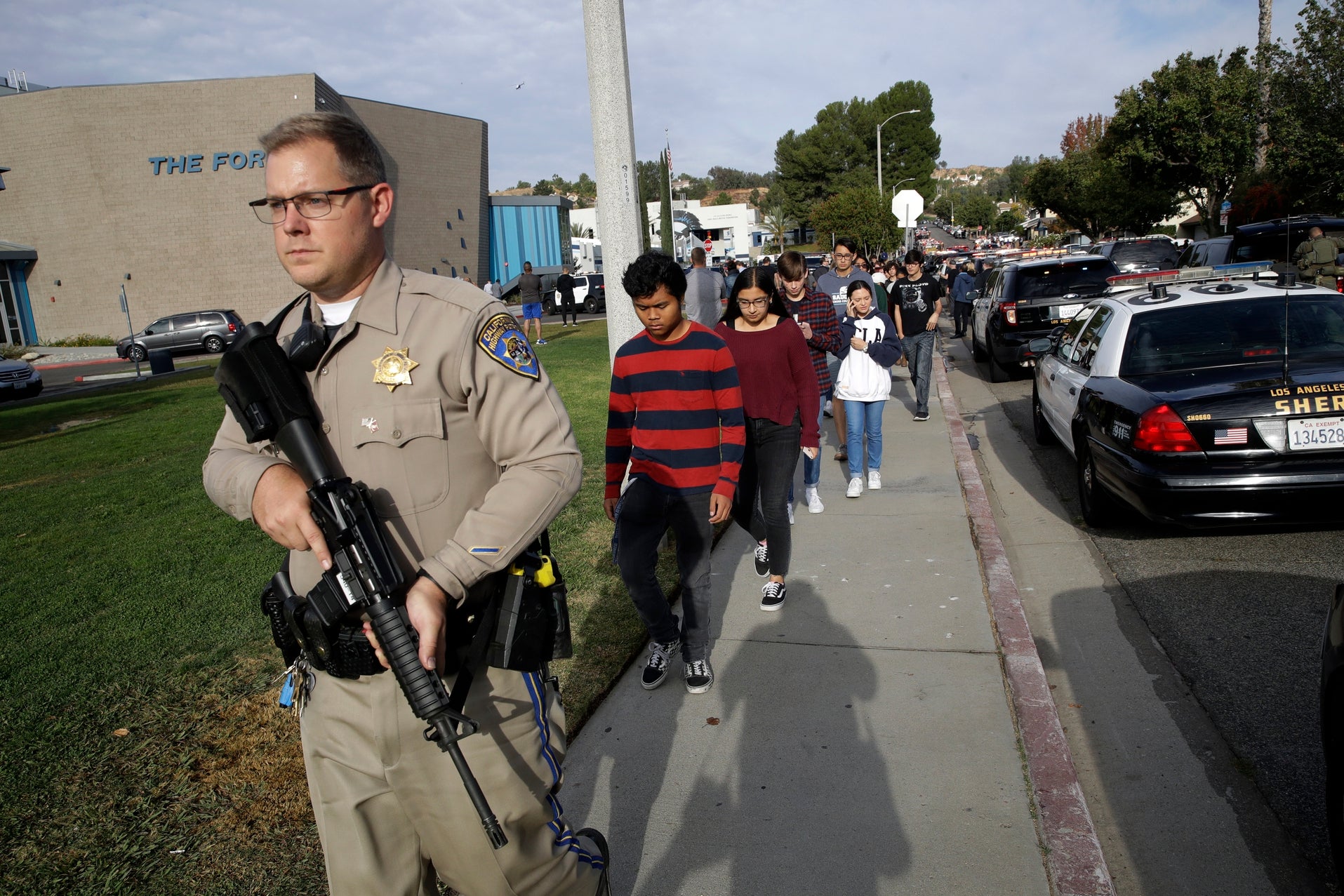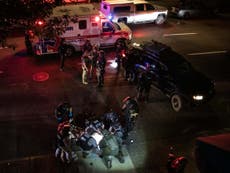This is what survivors of gun violence and school shootings actually say
'I will forever remember the looks on the faces of the kids as we hid. I remember bracing myself for the shooter's entrance'

In the months before the shooting at Marjory Stoneman Douglas High School in Parkland, Florida, I discussed ideas with my writing partner, Amye Archer, for a new anthology. It became clear that gun violence, and those left in its wake, was of particular interest to both of us. For her, Sandy Hook changed everything, as it did for many parents across the country. Her twin daughters were the same age as the children murdered on that day, and she has been advocating for change ever since. And for me, I’d been writing about trauma for years after my own experience with rape.
I saw the meeting of healing and advocacy weave throughout many survivors of gun violence’s personal narratives. One of the most profound examples is that of Marcel McClinton, a 19-year-old, Houston-based gun violence prevention activist, and survivor of a 2016 shooting outside of his church. “A gunman went on a shooting rampage with an AR-15… while I was co-teaching Sunday School to toddlers,” McClinton recalled. “We watched him while crouched under a window. We knew we would be the first line of defense if he came into the building.” For McClinton, the process of writing his personal narrative was “freeing.” “I will forever remember the look on the faces of the kids as we hid. I remember bracing myself for the shooter’s entrance and thinking, I’ll do everything I can to protect these kids.”
Hollye Dexter, who found her seven-year-old brother Christopher shot in the head by a neighborhood teen playing with his dad’s gun, has been writing for years to advocate for change. “I was 14 years old that summer morning when I woke to my mother’s screams,” Dexter says. “Please don’t let me die,” she recalls he said before losing consciousness. Christopher survived, but “the life meant for him was taken with one bullet,” which is still lodged in his brain today. After undergoing brain surgery and a year of physical therapy, he “had to learn how to use a fork, walk without dragging his leg, talk without slurring, and write with his left hand to compensate for loss of motor skills on his right side.” As an adult, Christopher struggles with the effects of PTSD and lead poisoning. His story resonated so strongly with the City Council in LA that they voted unanimously to pass mandatory Safe Storage in Los Angeles. “We had never had a unanimous vote on gun laws before,” Dexter said.
This project also taught me that trauma can silence people, and many communities represented in the book experienced silence in some way. Some chose to remain quiet after facing an intense media presence in the days after their shooting. Some stayed quiet out of respect for those who didn’t survive. A member of the Sandy Hook community told Amye, “My child lived. I have no right to speak.” Sometimes, the silence was cultural, as in the Amish community of West Nickel Mines, Pennsylvania.
Silence showed up often in this project — especially during those early days. Some communities didn’t respond; others were near impossible to contact. My co-editor and I spent months trying to find a way in, to give everyone a chance to speak their experience and have a voice, but in the end, some were not ready, and we respected their decision.
Silence was also intrinsic in the language. Some people we spoke with refused to be called “survivors” because they weren’t shot. Some who were shot refused to be called “victims”. Some spoke of their dead as “those lost” and others, “those murdered”. There seemed to be rules about grief, a hierarchy of trauma — unspoken yet acknowledged. Mary Kay Mace, whose daughter Ryanne was the youngest victim in the 2008 Northern Illinois University (NIU) shooting, says her daughter “was not lost, but taken against her will.” Upon hearing the news about shooting fatalities on campus, Mace and her husband attempted to reach Ryanne for hours. After no response, they took the one-hour drive to NIU. After realizing the campus might be on lockdown, they decided to go to the nearby hospital to make sure their daughter was not on the list of the wounded. “But a police officer came to take us into a private office to ask for her physical description. They had one unidentified female fatality. We described our daughter to the officer who said the unidentified victim had a tattoo. I kept saying, no, no, that's not her,” says Mace. But she recalled another identifying detail: Ryanne had a metal splint behind her two front incisors that had been left over from orthodontia. “After relaying that info, the next person we were taken to see was a hospital chaplain. The coroner told us what we could expect to see and that we couldn't touch her or even get too close. Once he opened the door, I could see instantly that my child was no longer lost; she was gone. And my heart didn’t just break: it detonated.”
After a year of documenting these personal narratives, we were left with a timeline of generational trauma told by those who lived it, whether through the lens of student, parent, daughter, son, best friend, neighbor, doctor, lawyer, husband or wife. This timeline provided answers, many of which can be found in these personal stories of letting go and moving on, managing survivor’s guilt, forgiveness, shame, denial, healing from physical and mental injuries, self-destruction, addiction, anger, love, and more.
For survivors of gun violence, sharing personal narratives not only supports healing, but encourages social and cultural change. We see evidence of this historically. Anne Frank’s The Diary of a Young Girl provided a glimpse into Frank’s life during the Holocaust and provided in depth accounts of her ideals and optimism in the face of horror. Her vulnerability makes readers consider how these stories fit in with their personal and social lives. The results can be transformative and encourage an audience to make their own meaning, which, in a sense, is the power of the personal narrative, especially in the trauma narrative because it proves and supports the strength of those who’ve suffered and made changes based on that suffering.
Yet, there is still so much left unsaid. Even if no one cares to listen, writing about trauma remakes our place in the world; it retaliates against the boundary suffering imposes on us.




Join our commenting forum
Join thought-provoking conversations, follow other Independent readers and see their replies